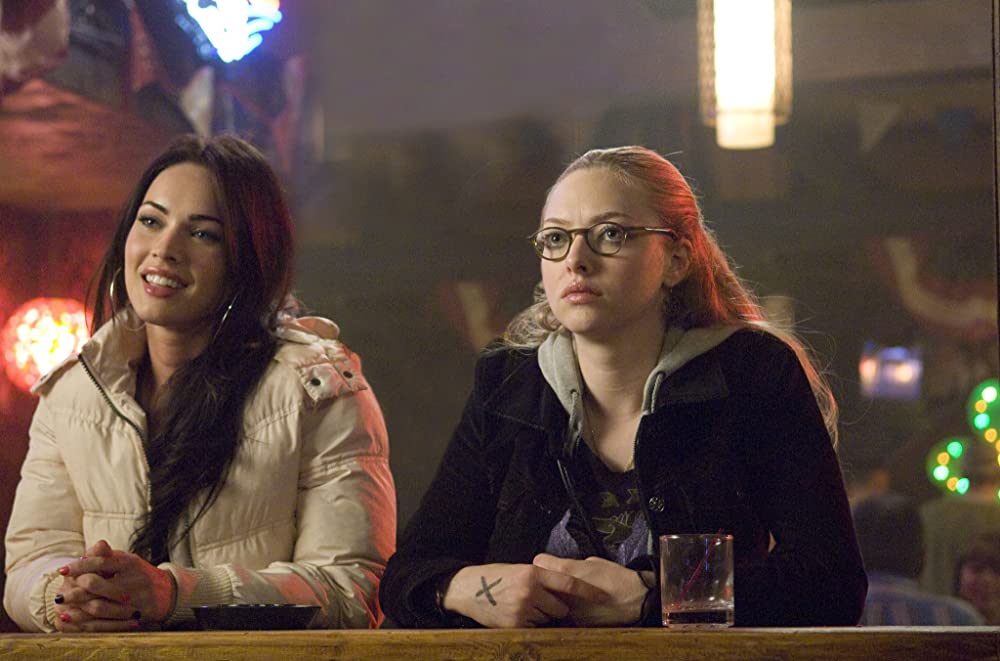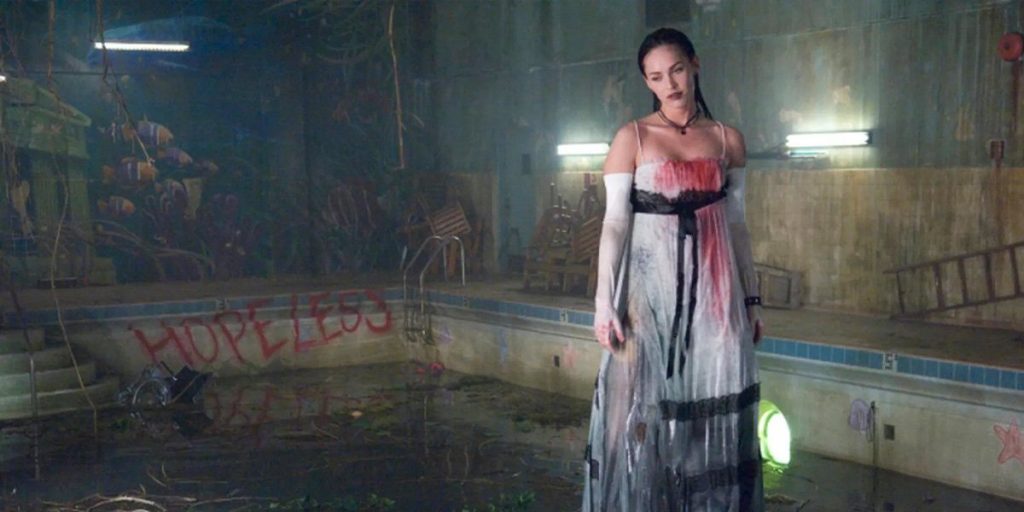Jennifer’s Body is a horror comedy that provides a laser-sharp look into femininity within the cut-throat culture of high school.
Often labelled “the tragedy of Megan Fox,” and more famous for being victim to its horrible mismarketing disaster than anything else, Karyn Kusama’s 2009 dark comedy film Jennifer’s Body is not even remotely the sexy horror-comedy that was promised to audiences upon its release, but a bold feminist take on beauty standards and the social stereotypes women are forced into based entirely on their appearance. In a darkly ironic sense, the lack of objectification of Megan Fox that killed the movie both critically and commercially serves to add a meta layer of emphasis to the film’s unapologetic stance that women’s perceived value to society has been relegated exclusively to their sexual appeal.
Jennifer’s Body is narrated as a flashback from the perspective of Jennifer’s (Megan Fox) best friend, a girl named Anita (Amanda Seyfried), or “Needy,” who was once an insecure and studious teenager living near Devil’s Kettle, Minnesota, and is now a violent mental inmate. Since childhood, she had been friends with Jennifer Check, a popular cheerleader, despite having little in common. One night, Jennifer takes Needy to a local dive bar, where a suspicious fire breaks out, killing several people. In shock, Jennifer agrees to leave with the band, ignoring Needy’s protests. We later find out they had attempted to sacrifice her to Satan, and that she managed to escape, but not without incurring damage; she often vomits thick black liquid, and seems to fluctuate between a pale, emaciated state and one of her usual beauty – dependent on how recently she feasted on the blood of boys.
Needy isn’t classically gorgeous (she’s wearing glasses, the surest of signs in any movie that the character is supposed to be a nerd or loser), and while one gets the sense that Jennifer only hangs out with her to make herself look better in comparison, their friendship is almost as old as they are, and they genuinely care about each other. Unlike Needy, Jennifer is beautiful, the prettiest girl in school. Gorgeous, malicious, and dominant to her friends and hopeful lovers alike, she is essentially a walking cliché – but nobody dares let that thought even cross their mind in her presence. It’s easy to glance at the pair of best friends and see little more than two archetypal teenagers, the slut and the nerd, but they are both such fully realized characters, with intense emotions, crushing jealousy, and the constant, desperate need for approval. They’re more than just stereotypes or caricatures; they both uniquely embody the anxious and awkward experience of teenagehood.

No matter how familiar the character of Jennifer may be to those who’ve seen enough high school movies, the film plays her against the way we’ve become accustomed. Jennifer might be the prettiest and most popular girl in school, but her revelling in her beauty is entirely superficial. She may not be self-reflective enough to be aware of it, but her social position is not one of choice but of force, and it is both self-perpetuated and seemingly inescapable in a vicious cycle. She isn’t just beautiful, she has to maintain and uphold that beauty standard that keeps her in the lofty position on the social hierarchy where she’s always been. She is a slave to everyone else, to the artificial society she “rules” over, because to be on their level would be to lose the position above them, which would take her off the pedestal on which she’s been placed – which would be good for her if only this artificially constructed social hierarchy wasn’t the entire determining factor of her (and everyone else’s) identity.
With this in mind, the movie begins to make sense, as does the unfortunate negative reception it received from both critics and audiences alike upon its release. When Jennifer gets sacrificed to Satan under the false pretenses that she is a virgin – a clear allegory for rape, allowing the movie to be read as a twist of the classic rape-revenge tale – the consequence is that she develops a bloodlust not to continue surviving, but to keep being beautiful. She has to literally murder boys in order to keep up the beauty standards demanded by her social position, a position that has come to determine not just her value to society but even her own self worth. It’s little wonder why such an audacious perspective on beauty flopped hard with audiences excited to see the very thing the movie was critiquing: for most, it was likely underwhelming and the themes went over their heads, and for others, it was almost a smack in the face – they went to see women objectified, and got an angry response to those very expectations. For me, with the benefit of looking at it over a decade later and an understanding of the controversy surrounding it from this perspective, I see it as it was always intended: a brilliant and witty satire on rape-revenge movies, and an empathetic and entertaining look at the horrors of high school hierarchy.

